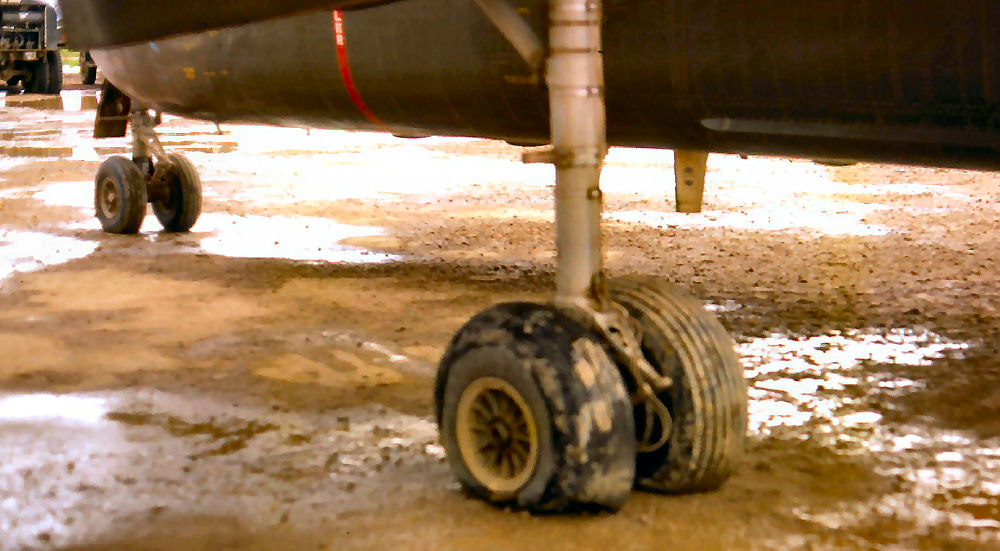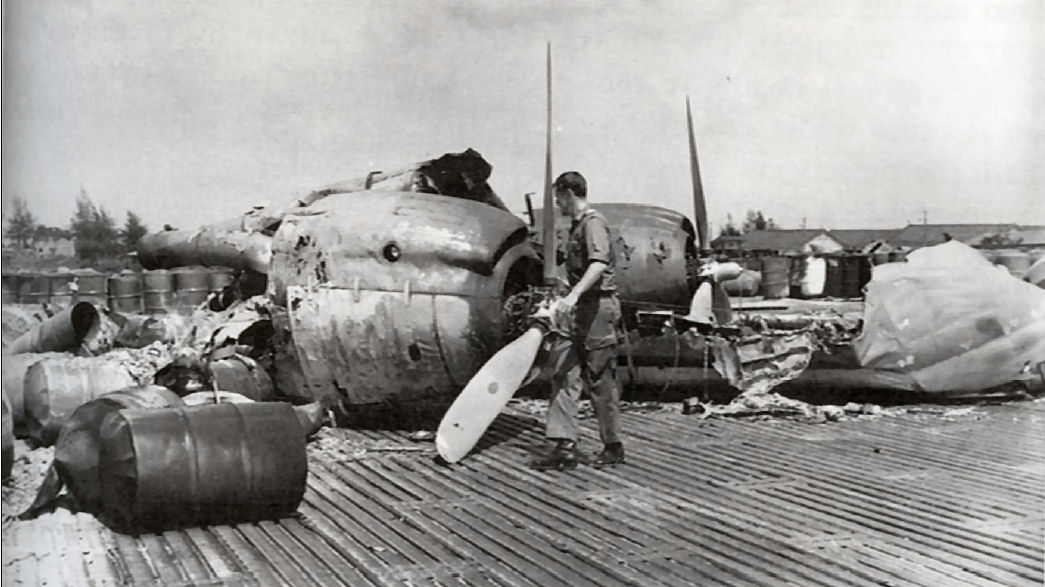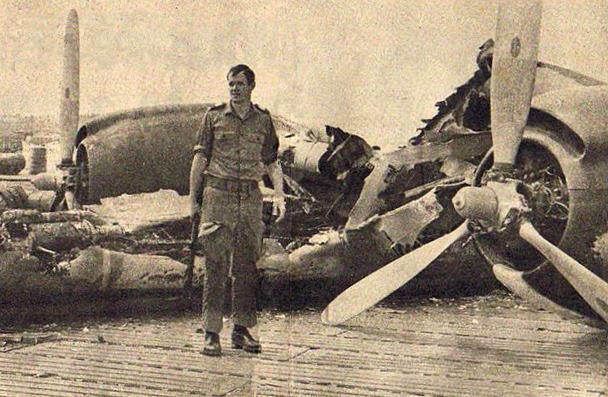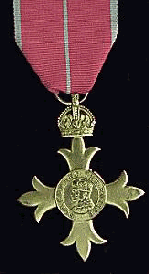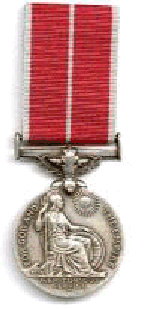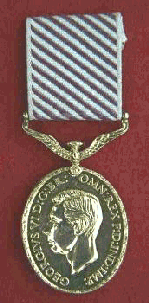|
Radschool Association Magazine - Vol 33 Page 12 |
||||||||||||||||||||
|
Privacy Policy | Editorial Policy | Join the Association | List of Members | Contact us | Index | Links | Print this page |
||||||||||||||||||||
|
|
||||||||||||||||||||
|
35 Squadron. RAAF Caribou Operations in South Vietnam 1964-72.
Ted Strugnell
Of the three RAAF flying squadrons which served in South Vietnam, the Caribou Squadron was the smallest. It was possibly perceived as the least glamorous (the trash haulers) however, its role was nonetheless important.
The ANZAC Day banner carries the words “Wallaby Airlines – First Squadron In, Last Squadron Out”.
The history and the role of 2 Squadron RAAF (Canberra Bombers) and 9 Squadron are well documented elsewhere however, because 35 Squadron did not operate directly in support of the Australian Task Force, the squadron was relatively unknown and received little recognition back home in Australia.
In what became the longest war in Australian History, 35 Squadron RAAF was deployed to Vietnam for longer (for the best part of 10 years) than the other two squadrons.
As no one person was there for the whole of that time, it is difficult, if not impossible, to write a history from first-hand experience. Perhaps I have some advantage in that, being among the last to be posted there for a full 12-month tour, at least I was able to look back over the entire involvement.
Every Australian who served in Vietnam as well as many Kiwis, Americans, Koreans, South Vietnamese and others knew of 35 Squadron as Wallaby Airlines and many will recall with affection coming up the ramp door of a Caribou and “home” to the relative safely of the familiar “Wallaby Airlines - Welcome aboard a Wallaby Flight” logo on the aircraft bulkhead door.
The CO showing an American one star the familiar "Wallaby Airlines" Logo on the aircraft bulkhead. This, as well as the rifle rack (also on the bulkhead), armour plate around the pilots seats and external paint were the only changes made to the "as-flown-in-Australia" aircraft . The weight of the armour plate was partially offset by removing the de-icing fluid and pumps as propeller de-icing was not required at the relatively low levels flown in Vietnam."
|
||||||||||||||||||||
|
For its short take-off and landing (STOL) characteristics in the short range support role, the squadron was equipped with the DHC-4 Caribou aircraft, well known in the West because of flood relief work. They were affectionately known as “green gravel trucks” and were purpose built by DeHaviland Canada for the role with that particular war in mind.
It was on an initial ferry flight from Canada that three aircraft were diverted to South Vietnam in 1964 to initially form RAAF Transport Flight Vietnam months ahead of Australian Army regular units and hence the “FIRST IN” seen on the squadron banner on Anzac Days. Three other aircraft joined the flight from Australia shortly after.
The RAAF Flight and later Squadron were controlled by the United States Air Force and integrated into the largest airlift in history, to put in in perspective, much bigger than the Berlin airlift.
|
||||||||||||||||||||
|
After the arrival of the Australian Army, priority was given to
supporting the Task Force where possible, however, it was the war
that ultimately decided priorities. Wallaby Airlines soon became
famous throughout the more than 115 airfields, most makeshift and
some the Americans couldn’t or wouldn’t operate into
Wallaby Airlines originally came from the squadron crest which depicts a Wallaby and the Wallaby radio call sign known to so many who monitored radio networks throughout the country, which was just about everybody.
It was amusing to hear the American air traffic controllers trying to repeat the Wallaby call-sign back with their American accents, not having the vaguest idea what it represented.
While para dropping of both supplies and personnel was not unknown,
especially in the early days, the prime
Rations as well as the evil smelling nhoc man (dried fish), including live animals, a normal way of resupplying in that part of the world. A technique was developed whereby cows were crated in open wooden boxes and parachuted to the ground where they could be kept alive and fresh for weeks if necessary.
The carrying of live animals was much to the disgust of the ground crew, I well remember in the last days of Vung Tau, working 7 days a week for months on end to clean the aircraft back to the rivets, because of Australian quarantine regulations, as well as maintaining the normal flying program.
In the first war in history in which the airlift operation was an extension of the battle itself and the aircraft engaged were subject to more ground fire than all other wars combined, incidents were too numerous to mention. Many caused injury, most causes damage, some were observed and resulted in the award of medals and, as in all wars, many passed unnoticed except by the participants themselves and unrecorded except in the memory of those nearby.
By way of example, here are but a few of those incidents. |
||||||||||||||||||||
|
On
January 19, 1969, an aircraft was taxiing on a resupply mission at
Katum, a small special forces out post near the Cambodian border
when it came under attack from mortar fire. In the words of the
Captain, Flt Lt Reg “Tommy” Thompson: “The first one landed about
25 feet in front of the port wing shattering the windscreen. Two
more followed in quick succession and then the rest. Most of the
hits were in the nose area”. It was later discovered there were over
a hundred holes in the forward surfaces of the aircraft. “We were
left with two choices, if we stayed we might take a direct hit and
if we left the aircraft might not perform correctly due to
When airborne, it was discovered, as well as two of the tyres being burst, the hydraulics were also out and the undercarriage had to be manually pumped up. To land at Bien Hoa the emergency undercarriage extension system had to be used.
What Tommy didn’t say was he was bleeding from a shrapnel wound to his leg. He was awarded the Distinguished Flying Cross (DFC) for his efforts in “preventing further damage to the aircraft and crew.” The Loadmaster, Cpl Barrie Gracie was awarded the Distinguished Flying Medal (DFM) for his assistance to the captain in jettisoning the cargo just prior to take off.
On another occasion, on March 29, 1970, Caribou A4-193 was carrying aviation fuel to That Son, 12 kilometres from the Cambodian border. At That Son the aerodrome was on the floor of a valley making it easy for “Charlie” (Viet Cong) to rain down rockets and mortars from the surrounding hills and then escape to his sanctuaries in nearby Cambodia.
Artillery frequently pounded the hills during an aircraft’s approach and it was always a “hot” turn around, (engines never stopped). As soon as the aircraft landed and stopped rolling, the load (usually rations, fuel and/or ammunition) was pushed out the back of the aircraft and it took off again.
The crew on this occasion was Pilot Officer Bert Milne (Captain), Pilot Officer Mick Calvert, Corporal Melville Church and LAC Robert Laing.
The first mortar round hit a wing disabling the aircraft and starting a fire in one of the fuel cells. The crew left the aircraft “post-haste” and “assembled” in a ditch at the side of the airfield then moved to slightly safer ground in a bunker about 30 metres away. |
||||||||||||||||||||
|
|
||||||||||||||||||||
|
All that remained of Caribou A4-193 after it was completely destroyed by enemy mortar fire at That Son in March 1970. The aircraft was carrying drums of helicopter fuel and the subsequent fire was so intense that the aircraft was reduced to molten metal, all that was left were the engines. The crew were extremely lucky to escape without serious injury. |
||||||||||||||||||||
|
More mortar rounds rained on and around the aircraft as “Charlie” saw the prize of a large aircraft destroyed. A few minutes after, the crew were transferred by jeep to the base command post bunker and remained there for several hours while the base continued under attack.
It was discovered later that during the attack, “Charlie” had penetrated the perimeter and suffered 34 confirmed (probably more unconfirmed) killed in action.
On one of the many occasions when bullets flew around the flight deck and cabin of aircraft, one of the loadmasters, Cpl Bob St John, had a lucky escape when a round passed through the “Esky” on which he was sitting. The round came up through the belly of the aircraft, penetrated the cockpit floor, passed through the bottom of the Esky, continued on through the ice inside and stopped when it lodged in the Esky lid, a hair’s breadth from the Bob’s “important bits”.
Bob extricated the bullet and kept it as a particularly personal souvenir. |
||||||||||||||||||||
|
|
||||||||||||||||||||
|
The Engineering Officer of 35 Squadron, Flt Lt Kevin Griffin, (Vietnam from June 1969 to June 1970) inspects the ‘remains’ of Caribou A4-193 after it was mortared at That Son. |
||||||||||||||||||||
|
“The night belonged to Charlie” and large aircraft always made a good target. During the 8 years 35 Sqn operated in Vietnam, one aircraft was destroyed and numerous damaged at outlying airfields and fire support bases. The RAAF had a policy of trying to get an unserviceable aircraft back to base or at least to a secure area by nightfall. I can remember working on cylinder replacements, carburettor changes and the like at some obscure airfield in order to the aircraft out by nightfall.
On the 6th October 1968, near Da Lat, aircraft A4-210 was extensively damaged when it was taxiing near a ditch and the ditch edge collapsed. |
||||||||||||||||||||
|
A lonely frog telephoned the Psychic Hotline and asked what his future holds. His Personal Psychic Advisor tells him: "You are going to meet a beautiful young girl who will want to know everything about you." The frog is thrilled, "This is great!, Will I meet her at a party?" he croaks. "No," says the psychic, "in biology class." |
||||||||||||||||||||
|
The aircraft was originally repaired in country, however, it did not fly correctly and was eventually one of the two aircraft returned to Australia for more extensive repairs (A4-210 flew under its own power; A4-152 was shipped home on the HMAS Sydney). |
||||||||||||||||||||
|
|
||||||||||||||||||||
|
Geoff Hall (Elec) beside A4-210 |
||||||||||||||||||||
|
By the end of the involvement, in 1972, the 'score' stood something like this:
|
||||||||||||||||||||
|
||||||||||||||||||||
|
Of course there was a lot more to the squadron than just aeroplanes and operations. A squadron is made up of people, and these people were members of RTFV/35 Squadron.
Six hundred and twenty four (624) such people served with the squadron over the years it operated in South Vietnam with around 85 on strength at any one time. Flying hours were at a level not previously experienced by most pilots and at the completion of a tour, many had over a thousand sorties in their log books.
To the amazement of the Americans, who had literally dozens of aircraft and frequently missed missions, the squadron flew 5 missions each day with 7 aircraft, 365 days of the year and only missed a mission because of extreme damage to an aircraft.
US Caribou line, Vung Tau
A high price was paid by ground crews to achieve this as the amount of maintenance, servicing and rectification carried out to keep the aircraft serviceable can only be imagined and some the miracles performed by these dedicated professionals had to be seen to be believed. It was not unusual to talk to people drifting in and out of sleep.
It was a lonely existence at Vung Tau as Christmas 1971 and New Year 1972 slowly came around. No 9 squadron, which had shared the hanger with 35 squadron, had left and No 2 squadron, which was based at Phan Rang to the north, had also gone. Nui Dat was empty, the Australian Army had all but gone, there was a half company reactionary force out at Back Beach whose task it was to come to the aid of any of the small remaining detachments (including the 60 or so 35 Squadron personnel) in the event of an emergency.
We were briefed on intelligence reports of Viet Cong infiltration into Vung Tau causing rumours in the local population that “Charlie” may try for one more political victory by wiping out this small, seemingly forgotten, detachment of the RAAF.
|
||||||||||||||||||||
|
On Duty Crew, in December, 1969 are, Clockwise from the Driver:
F/Sgt Dudley Cook (Sumpie), LAC Nigel Murray (Instruments), LAC Wally Salzmann (Framie), LAC Barry Allwright (Eleco), LAC Trev Benneworth (Radio), Cpl Ken Radford (Framie) Ken Matthews (Sumpie) (And not a beer gut in sight!!! - tb) |
||||||||||||||||||||
|
Because we did not know exactly when we were going home and the Australian public, to all intents and purposes, believed Australia was out of Vietnam, some of us became paranoid that Australia and the Government had forgotten our small band. Mail became all the more important as the tenuous thread that indicated at least somebody knew we were still there.
When we finally had an RTA (return to Australia) date, for obvious security reasons, we were unable to tell the Vietnamese. When we said “see you tomorrow” or “see you next week” knowing full well we would probably never see them again, they probably sensed something was on, (and there is a very strong rumour that in fact they were all murdered shortly after we left). |
||||||||||||||||||||
|
While the great deeds of the people who made up the squadron are as noble as they are, as with any war, it is the more mundane daily hard slog that counts and in this the statistics speak for themselves.
By the time 35 Squadron came home, (the last 4 aircraft finally left Vung Tau on the 19th February, 1972) it was the longest serving RAAF unit in Vietnam. Except for the Australian Army Training Team, it was also the longest serving Australian unit in Vietnam. It had carried nearly 41.5 million kilograms of freight in addition to mail, officially 700,000 passengers, (unofficially many more) and in spite of numerous wounds, miraculously did it without any loss of life.
To put it in another context, in the words of an American Colonel commanding the 315th Air Command Group, “during a representative month, February 1965, the RAAF Caribous hauled 1010 tons with 6 assigned aircraft (168 tons/aircraft) while the US Army hauled 5095 tons with 42 aircraft (121 tons/aircraft).
The Supreme Commander Vietnam, General William Westmorland, after failing to get his own transport squadrons operating with the same efficiency, in May 1965, cabled the Australian Government requesting an additional 12 aircraft Caribou squadron for Vietnam.
This request was rightfully refused, Australia only had two such squadrons.
We, in 35 Squadron, believe we won our small part of our small war and as with the whole Australian involvement it was left to others in other places, not the least of which were Washington, Paris and Canberra, to do the losing.
|
||||||||||||||||||||
|
About the author.
Ted Strugnell was an Instrument Fitter and like all members of the RAAF who served in Vietnam, was Permanent Air Force. He was posted to 35 Squadron in Vietnam as a Corporal in 1971/1972 which was at the very end of the Australian involvement.
Ted joined the RAAF from Charleville and went on to serve 21 years after which he worked for the Department of Defence as a ‘civvy’.
He wrote the article, which first appeared in the Toowoomba Chronicle and which was aimed mainly at a non-aviation audience, about 10 years ago .
He is now retired and lives in Toowoomba.
|
||||||||||||||||||||
|
|
||||||||||||||||||||
|
Commanding Officers of 35 Sqn.
Decorations earned by Personnel in the Squadron.
Member of the Order of the British Empire. Flt Lt Pilot. John Thomas CONNELL, (Jun 1968 – Jun 1969) W/Off Eng. Allan Richard GRINTER (Apr 1967 – Nov 1967) W/Off Medic Andrea Giovanni PELLIZZER, (Sep 1965 – May 1966) Flt Lt Equipo Bruce Victor TIPPING, (Jul 1965 – Mar 1966)
Sqn Ldr Eng Robin Norman WADE, (Jul 1964 – Apr
1965)
British Empire Medal. Sgt Sumpie Barry William FITZELL, (Jun 1970 – 1971)
Distinguished Flying Cross. Sqn Ldr Eng Roger Alfred BUDD, (Jun 1970 – Jun 1971) Sqn Ldr Pilot Stanley CLARK, (Nov 1970 – Nov 1971) Flt Lt Pilot Vance DRUMMOND, (Jun 1966 – Dec 1966)
Plt Off Pilot Jack Darby ESPIE, (Feb 1968 – Dec
1968) Sqn Ldr Pilot Anthony John FOOKES, (Feb 1967 – Feb 1968) Wng Cdr Pilot Victor Douglas GUTHRIE, (Nov 1965 – Jul 1966) Sqn Ldr Pilot Douglas Clifford HARVEY, (Mar 1965 – Nov 1965) Flg Off Pilot Robert Francis MEARES, (Jun 1969 – Jun 1970) Wng Cdr Pilot Charles James MELCHERT, (Jun 1966 – Jun 1967) Wng Cdr Pilot Stewart MITCHELL, (Nov 1969 – Nov 1970) Plt Off Pilot Francis William ROBINSON, (May 1970 – Jun 1971) Sqn Ldr Pilot Barry William SEEDSMAN, (Nov 1968 – Nov 1969) Sqn Ldr Pilot Christopher John SUGDEN, (July 1964 – Apr 1965) Flt Lt Pilot Reginald John THOMPSON, (Mar 1968 – Mar 1969) Sqn Ldr Pilot Nicholas James WATLING, (Jun 1967 – May 1968)
Distinguished Flying Cross and Bar. Sqn Ldr Pilot Douglas Clifford HARVEY, (Mar 1965 – Nov 1965)
Sqn
Ldr Pilot Christopher John SUGDEN, (July 1964 – Apr 1965)
Distinguished Flying Medal. Cpl Loady Barry Thomas GRACIE, (July 1964 – Feb 1965 and Apr 1968 – Mar 1969) Cpl GH Rodney Joseph RANGER, (Apr 1966 – Dev 1966)
Commendation for Distinguished Service. Sgt Framie Donald James BOOTH, (Feb 1968 – Feb 1969) Cpl Loady Malcolm Robert “Bugs” ROSE, (Nov 1965 – Jan 1966 and Jul 1966 – Apr 1967)
Mentioned in Dispatches. Flt Lt Pilot Anthony ABBOTT, (Jun 1965 – Feb 1966) Sgt Equipo Eric Glen ALLEN, (Apr 1966 – Dec 1966) LAC Loady Stewart Hampton BONETT, (Oct 1966 – Oct 1967) Cpl Framie Colin Henry BRUCE, (Mar 1970 – Mar 1971) Flg Off Pilot Michael Sandro CALVERT, (Dec 1969 – Dec 1970) Flt Lt Pilot Cunningham Norman CASSELS, (Oct 1968 – Aug 1969) Cpl Metal Worker Raymond CHANDLER, (Nov 1965 – Jun 1966) Flg Off Pilot Kerry John “Big Chuck’ CONNORS, (Apr 1970 – Apr 1971) Flg Off Pilot Ian Bruce COOPER, (Aug 1967 – Jul 1968) Cpl Loady Douwe ‘Bill’ DE BOER, (Dec 1969 – Dec 1970) Cpl Framie Charles John DOWNES, (Mar 1965 – Nov 1965) Cpl Loady Colin William DUFFIELD, (Jan 1969 – Jan 1970) Flt Lt Pilot George GODFREY, (May 1965 – Aug 1965 and Nov 1965 – Apr 1966) Flt Lt Eng Kevin Vernon GRIFFIN, (Jun 1969 – Jun 1970) LAC Sumpie David Michael GWIN, (Jul 1964 – Feb 1965) Flg Off Pilot Brian Greatorex HAMMOND, (Aug 1964 – May 1965) Flt Lt Pilot John Mcleod HARRIS, (Apr 1966 – Apr 1967) Flg Off Pilot John Raymond HUGGETT, (Jan 1970 – Jan 1971) Flg Off Pilot Neil Francis JONASSON, (Oct 1967 – Nov 1967 and Jul 1968 – Jul 1969) Sgt AMWKR Walter Joseph JONES, (Apr 1969 – Apr 1970) Flt Sgt Sumpie Frank Anthony LATHAM, (Mar 1965 – Nov 1965) Flt Sgt Sumpie Thomas George LENTON, (Nov 1965 – Nov 1966) Flt Lt Pilot Michael Raymond LEWINO, (Aug 1966 – Jul 1967) Flg Off Pilot Maurice Alexander LEWIS, (May 1968 – May 1969) Flg Off Pilot William Stewart MCALISTER, (Feb 1967 – Feb 1968) Flt Lt John Terence MCDONNELL, (Jun 1966 – Jun 1967) Cpl Loady Stanley Donald MELLOW, (Nov 1965 – Jul 1966 and Aug 1967 – May 1968) Flt Lt Pilot Colin MONK, (Feb 1969 – Feb 1970) Flt Lt Pilot Martin Campbell NEWMAN, (Jul 1970 – Jul 1971) Flt Lt Pilot Graeme Alexander NICHOLSON, (Aug 1965 – Apr 1966) Flt Lt Pilot Jeffrey Allan PEDRINA, (Aug 1966 – Jul 1967) Flt Lt Pilot Alan John PERRY, (Oct 1967 – Dec 1968) Flg Off Pilot John Grenfell PROWSE, (Jul 1970 – Jun 1971) Flt Lt Pilot Ronald George RAYMOND, (Sep 1964 – Mar 1965) Cpl Loady Barry Alan SHARMAN, (Nov 1965 – July 1966 and Oct 1968 – Jul 1969) Cpl Loady Herbert Roy “Marlo” SHARPE, (Feb 1966 – Nov 1966 and May 1968 – Feb 1969) Sgt Loady Robert Patrick ST JOHN, (Aug 1964 – Aug 1964 and Jun 1965 – Feb 1966) Flg Off Pilot Jeffrey Phillip TRAPPETT, (Oct 1970 – Oct 1971) Cpl Loady Robert Maxwell WARK, (Jul 1964 – Mar 1965) Flt Lt ADG Barry Edgar Stanley WILLIAMSON, (May 1966 – Sep 1966) Flg Off Pilot Joseph James WILSON, (May 1969 – May 1970) Flg Off Pilot Peter YATES, (Nov 1965 – Jun 1966) Cpl Loady Glynn James “Jock” YOUNG, (Oct 1965 – Jul 1966 and Jul 1969 – Apr 1970)
|
||||||||||||||||||||
|
An elderly couple had dinner at another couple's house, and after eating, the wives left the table and went into the kitchen. The two men were talking, and one said, 'Last night we went out to a new restaurant and it was really great.. I would recommend it very highly. 'The other man said, 'What is the name of the restaurant?' The first man thought and thought and finally said, 'What is the name of that flower you give to someone you love? You know.... The one that's red and has thorns”. “Do you mean a rose?' says his mate 'Yes, that's the one,' replied the man. He then turned towards the kitchen and yelled, 'Rose, what's the name of that restaurant we went to last night?'
|
||||||||||||||||||||
|
Back Go to page: 1 2 3 4 5 6 7 8 9 10 11 12 13 14 15 16 17 18 19 20 Forward
|
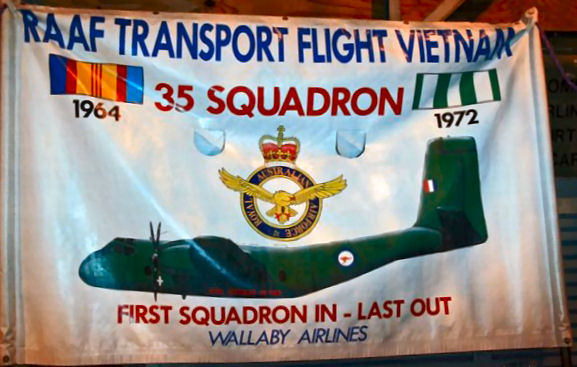
 ,
throughout the length of the country from the 17th
parallel to the Mekong Delta. It became known that the Wallaby would
always make it through.
,
throughout the length of the country from the 17th
parallel to the Mekong Delta. It became known that the Wallaby would
always make it through. task
was airlift, airlift of personnel, rations, the essential for morale
mail and ammunition. Evacuation of refugees and carrying of the dead
and dying was depressing. As well as Australian and other allied
troops, the squadron carried Vietnamese troops with their families,
goods, chattels and livestock.
task
was airlift, airlift of personnel, rations, the essential for morale
mail and ammunition. Evacuation of refugees and carrying of the dead
and dying was depressing. As well as Australian and other allied
troops, the squadron carried Vietnamese troops with their families,
goods, chattels and livestock. 